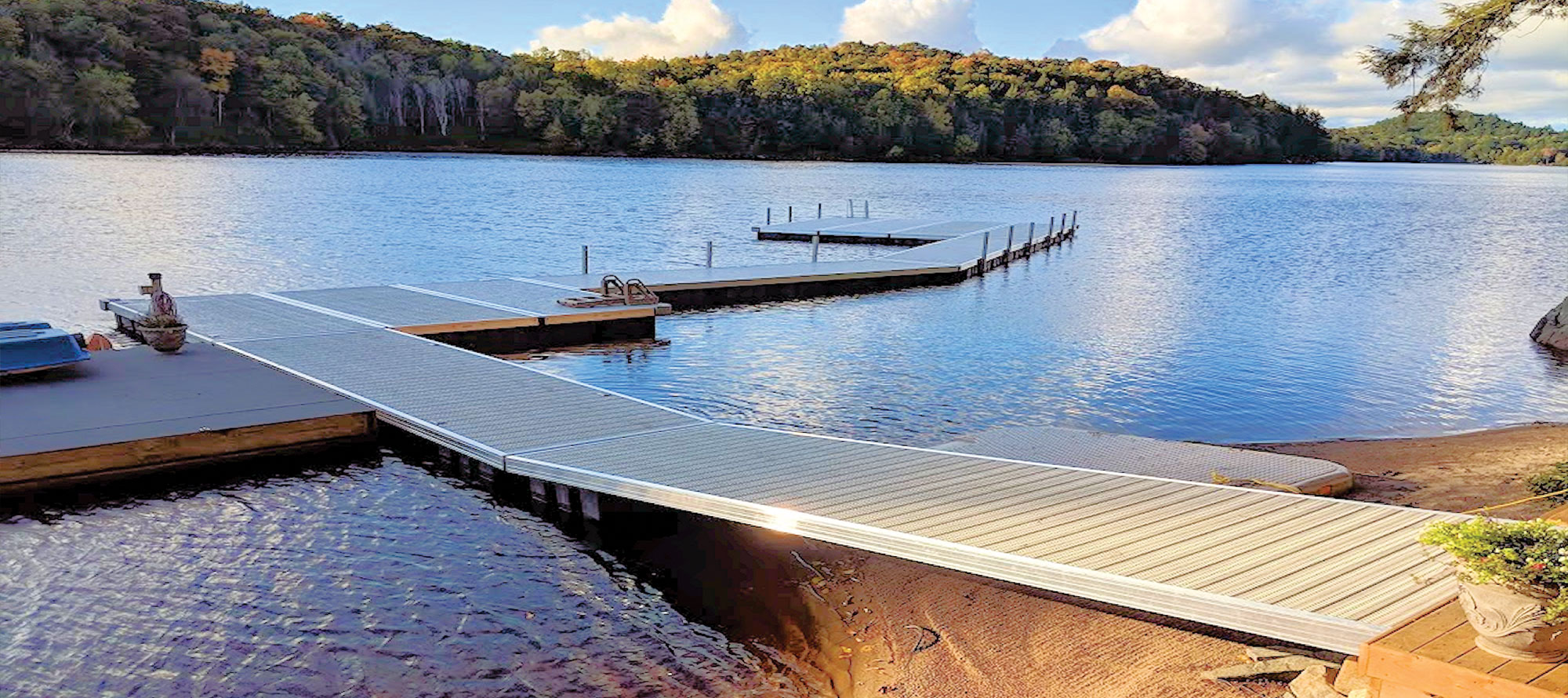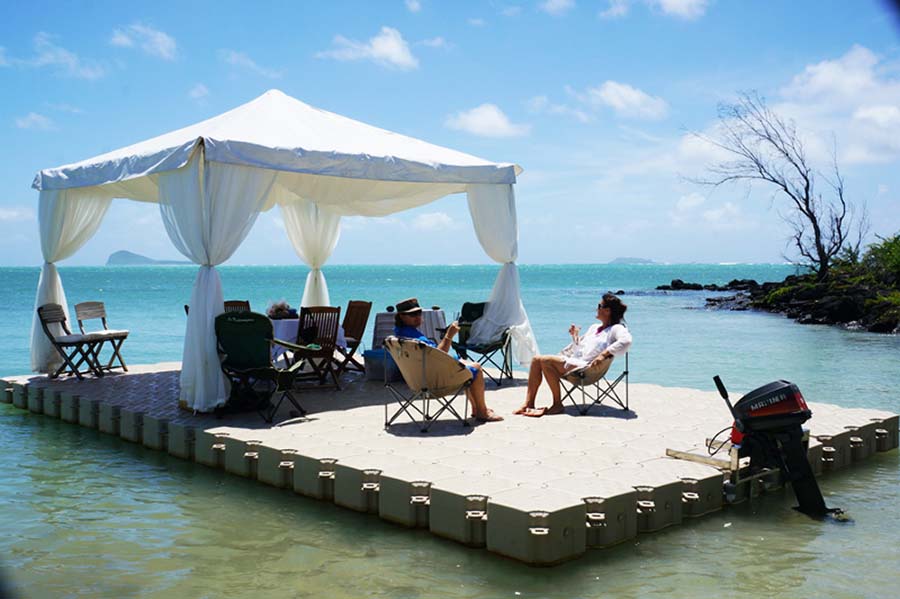Navigating the Options: Picking the Right Dock Company for Your Floating Dock Job
Navigating the Options: Picking the Right Dock Company for Your Floating Dock Job
Blog Article
Create the Perfect Docking Service With Floating Docks
Floating docks existing a versatile remedy for a range of maritime needs, adjusting effortlessly to varying water degrees and varied vessel types. As we explore the crucial aspects that contribute to the efficiency of floating docks, several crucial factors pertaining to security and maintenance will arise, increasing inquiries regarding how to enhance your docking experience.

Benefits of Floating Docks
Floating docks offer numerous benefits that make them a perfect choice for various maritime applications. Unlike dealt with docks, floating docks rise and fall with the trend, making certain constant ease of access for vessels.
Additionally, floating docks are typically easier and quicker to mount compared to traditional set structures. Their modular design permits for simple assembly and disassembly, assisting in maintenance and moving when needed. This adaptability is specifically advantageous for short-lived applications or in environments where conditions may change.
Floating docks also often tend to be extra ecologically friendly, as they lessen disruption to the seabed and bordering aquatic ecosystems. Their resilient nature reduces the danger of damages to marine life, advertising a healthier atmosphere. Furthermore, these docks can be tailored to accommodate different vessel dimensions, making sure that they fulfill particular functional demands - floating docks.
Eventually, the mix of versatility, simplicity of installment, and environmental considerations makes floating docks a very reliable solution for a broad variety of maritime needs.
Choosing the Right Materials
Selecting the suitable materials for floating docks is vital to guarantee longevity, stability, and resilience. The option of materials directly affects the dock's performance in various environmental conditions, consisting of direct exposure to water, sunshine, and potential wear from marine web traffic.
Typical materials used for floating docks consist of light weight aluminum, wood, and high-density polyethylene (HDPE) Aluminum is light-weight, corrosion-resistant, and calls for marginal upkeep, making it an exceptional option for durability. Its first price can be greater compared to other products.
Wood, while aesthetically appealing and giving a typical appearance, can be vulnerable to rot and insect damages otherwise correctly treated. Therefore, making use of pressure-treated timber or naturally durable varieties like cedar or redwood can alleviate these issues.
HDPE is a preferred option due to its resistance to UV rays and chemicals, in addition to being eco-friendly. floating dock services. It is lightweight and readily available in different shades, permitting customization
Inevitably, the best product choice will rely on particular needs, including budget plan, wanted looks, and environmental factors to consider. Mindful assessment of these aspects will result in a resilient and effective floating dock solution.
Design Factors To Consider for Security
When designing floating docks, making certain stability is an essential facet that can significantly impact their capability and safety and security. Stability in floating dock style is influenced by numerous variables, including buoyancy, weight distribution, and the arrangement of elements. An ideal buoyancy system need to utilize materials that supply enough lift while minimizing weight. This balance ensures that the dock remains above water, also under differing tons.
Weight distribution is essential; evenly dispersing tons across the dock avoids turning and improves stability. Wider layouts can provide increased security, especially in rough water problems, while longer docks might need additional assistances to stop sagging.
An additional crucial consideration is the look at here ecological influence, consisting of wave action and wind. Including functions such as sidewalls or skirting can help mitigate the results of ecological pressures, preserving security in damaging conditions. Ultimately, a mix of thoughtful design, product option, and understanding of ecological elements will certainly yield a drifting dock that meets both security and safety and security demands.
Installation Tips and Methods

Next, secure the needed licenses and comply with local regulations, which may determine setup techniques and environmental factors to consider. Involve a qualified contractor experienced in floating dock installments if needed. Usage top notch materials developed for aquatic settings to boost longevity and durability.
When positioning the dock, align it alongside the coastline to help with very easy accessibility. Make sure that the anchoring system is robust, employing cinder block or helical supports to maintain the dock against wind and wave action. It's critical to make up seasonal water degree changes, including prospective ice motion in colder climates.
Throughout the setup, confirm the dock's floatation and stability prior to completing the anchoring. Routinely inspect the installation for any type of signs of wear or damages. By following these ideas and strategies, you can accomplish a safe, functional, and cosmetically pleasing floating dock setup that meets your demands.
Upkeep and Care Standards
Maintaining and caring for floating docks is crucial to extending their life-span and ensuring safe use. Regular assessments must be conducted to identify any type of indicators of wear, damage, or marine growth. Search for splits, loose fittings, or stained areas on the dock's surface area, as these issues can jeopardize architectural stability.
Cleansing is crucial. Use a pressure washer to remove algae, barnacles, and debris, which can build up gradually. For persistent growth, consider ecologically pleasant cleaner that will not harm aquatic life.
Additionally, check the mooring lines and supports frequently to ensure they are protected and totally free find this from rust. Change any type of frayed or harmed lines without delay to preserve stability.
Throughout severe weather condition, such as storms or freezing problems, take precautionary steps. Secure the dock with added mooring lines and, if viable, get rid of any kind of removable find out components to stop damage.
Final Thought
In final thought, the application of floating docks presents a functional and effective docking option ideal for various maritime applications. Their versatility to varying water degrees, combined with a modular layout, enables for easy modification and relocation. Picking ideal materials improves both longevity and visual allure, while careful factor to consider of stability guarantees security and long life. With appropriate installment and routine maintenance, floating docks can supply efficient and reputable docking experiences for a wide variety of vessels.
As we discover the vital components that contribute to the effectiveness of floating docks, numerous key aspects regarding stability and maintenance will arise, raising concerns concerning how to enhance your docking experience. Unlike dealt with docks, floating docks surge and autumn with the trend, ensuring consistent availability for vessels.When creating floating docks, making certain security is a fundamental aspect that can substantially impact their performance and safety and security. Security in floating dock layout is affected by numerous variables, consisting of buoyancy, weight distribution, and the arrangement of components. Eventually, a combination of thoughtful style, product choice, and understanding of ecological variables will certainly generate a drifting dock that fulfills both security and safety and security demands.
Report this page